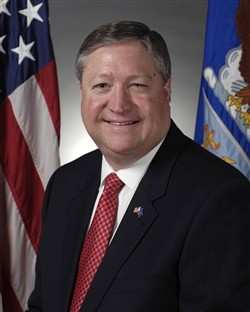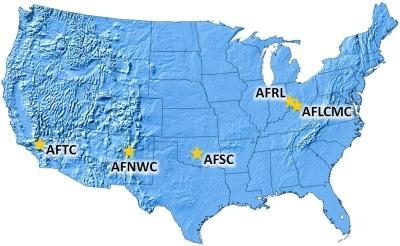Layers Of 'Middle Management' Cut In Adjustments To Staffing
Levels
Some 436 captains and majors in the United States Air Force are
finding that joining the military was not necessarily a guarantee
against losing their jobs. The Air Force plans to lay off that
number of mid-grade officers as part of a staffing level adjustment
due the services' highest retention rate in 16 years. The retention
level is attributed at least in part to the sluggish economy and
lack of civilian jobs.

Fox News reports that the Air Force must limit its workforce to
332,800 officers and enlisted airmen by the end of this fiscal year
... Sept. 30, 2012. The layoffs were made after the
Reduction-in-Force Board reviewed the service records of 8,832
officers. Of those being separated, 367 are captains and 69 are
majors. All will receive full separation pay and six months of
medical benefits. They will be mustered out in March, 2012.
The move was one of several announced by the Air Force
Wednesday. In response to direction from the Secretary of Defense
for the Department of Defense to stop civilian growth above fiscal
year 2010 levels, and the need to add 5900 positions against the
Air Force's top priorities, the Air Force said it would be
eliminating approximately 9000 civilian positions. The service said
in a news release that the adjustments reflect several initiatives
designed to align limited resources based on Air Forces priorities.
This process is an ongoing effort to increase efficiencies, reduce
overhead and eliminate redundancy.

"We can't be successful without our talented and experienced
civilian workforce," said Secretary of the Air Force Michael B.
Donley (pictured). "We are making difficult choices about how to
deliberately restructure and posture the force and will continue to
look for new ways of accomplishing the mission. We can't afford
business as usual."
Upon receiving the Secretary of Defense's 2010 memo directing that
civilian manpower costs stay within fiscal year 2010 levels, the
Air Force began a comprehensive strategic review of the entire Air
Force civilian workforce to determine whether or not civilian
authorizations were in the right places to meet mission
priorities.
The strategic review revealed several imbalances. Some high
priority areas needed to grow, while some management and overhead
functions needed streamlining. These imbalances led to a variety of
initiatives focused on realigning scarce manpower resources with
the most critical missions. In particular, the Air Force will grow
by approximately 5900 positions in acquisition, the nuclear
enterprise, and intelligence, surveillance and reconnaissance and
other key areas while reducing approximately 9000 positions in
management, staff, and support areas.
Materiel Command Map

One of the key restructures announced as a result of management
overhead streamlining is to Air Force Materiel Command. "The
restructure of Air Force Materiel Command - our largest employer of
civilians - will focus on standardizing processes, streamlining
decision-making and aligning missions to allow the command to
operate more effectively and efficiently," Schwartz said.
According to Schwartz, the AFMC restructure will allow AFMC to
eliminate approximately 1,000 overhead positions. The command will
preserve workforce and mission capabilities by consolidating
management functions around AFMC's core missions. After this
restructure, AFMC will move away from its traditional,
management-staff model consisting of a center and headquarters
staff on each AFMC base and create a "lead" center for each of its
five mission areas.
The Life Cycle Management Center will be headquartered at Wright
Patterson AFB, OH, the Sustainment Center will be located at Tinker
AFB, OK, and the Air Force Test Center will be based at Edwards
AFB, CA. The Air Force Research Laboratory will remain at Wright
Patterson AFB, OH and the Air Force Nuclear Weapons Center will
remain at Kirtland AFB, NM.
The AFMC restructure will be implemented by Oct. 1, 2012.
AFMC will not be the only major command affected. Air
Force-wide, local leaders will be sharing the results of the
civilian manpower adjustments with their workforces over the next
several days. "Civilian manpower adjustments will occur at all
levels of the Air Force," said Brig. Gen. Gina Grosso, Manpower,
Organization, and Resources director. "We are focused on shaping
the force within our fiscal constraints and are committed to
maintaining our long history of excellence as we build the Air
Force of the future. At this time, we are not sure whether a
reduction in force will be necessary," she said.
 Aero-News: Quote of the Day (04.28.25)
Aero-News: Quote of the Day (04.28.25) ANN's Daily Aero-Term (04.28.25): Decision Altitude (DA)
ANN's Daily Aero-Term (04.28.25): Decision Altitude (DA) ANN's Daily Aero-Linx (04.28.25)
ANN's Daily Aero-Linx (04.28.25) Airborne-Flight Training 04.24.25: GA Refocused, Seminole/Epic, WestJet v TFWP
Airborne-Flight Training 04.24.25: GA Refocused, Seminole/Epic, WestJet v TFWP Aero-News: Quote of the Day (04.29.25)
Aero-News: Quote of the Day (04.29.25)





